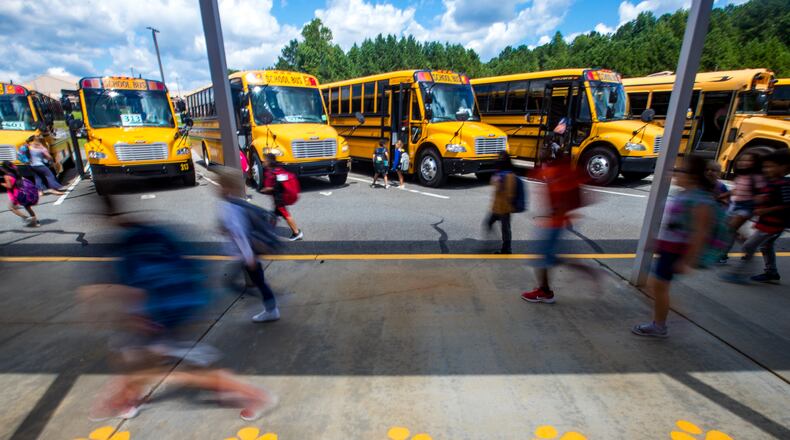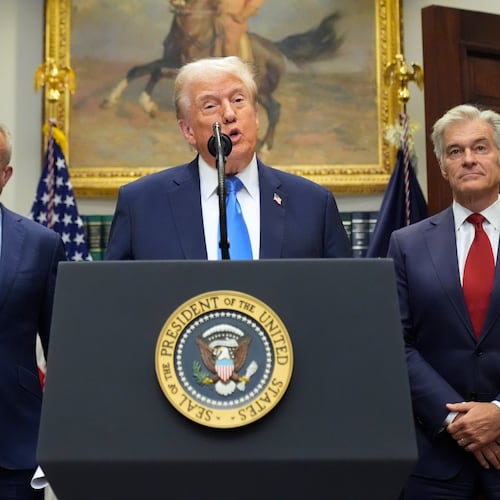Nahil Andujar was working for a health care company and just two courses away from a bachelor’s degree in microbiology when her husband joined the Army — a decision that uprooted the family of five from Puerto Rico and brought them to Clarksville, Tenn. in 2000.
When her husband recently retired, Andujar began to rethink her own career path and recalled her years volunteering in her children’s schools. She became an educational assistant in a Spanish dual-immersion program in the Clarksville-Montgomery schools, northwest of Nashville.
“I wasn’t planning to become a teacher, but I noticed how a teacher could transform a student’s life,” she said.
Now she’s part of an effort to transform educator preparation with the nation’s first apprenticeship in teaching approved by the U.S. Department of Labor.
The Teacher Residency Program – a partnership between the school district and Austin-Peay State University – is a “grow-your-own” model in which districts recruit candidates from within their communities and provide them with extensive on-the-job experience before they take over their own classrooms.
Because the nation’s teachers are far less racially diverse than the public-school students they instruct, many consider the approach an effective way to recruit more Black and Hispanic educators. And with teacher shortages across the country, efforts to strengthen the “pipeline” are popular among policymakers.
“Let’s get rid of this idea of a first-year teacher,” Tennessee Education Commissioner Penny Schwinn said when she announced the new Teacher Occupation Apprenticeship.
By the time candidates finish the three-year program, they’ll not only have a bachelor’s degree and teacher certification, Schwinn said, but they will also have experience working under the supervision of a master educator.
Last year, the Department of Labor awarded more than $130 million in grants to 15 states for apprenticeships to meet workforce needs across multiple industries.
Becoming a registered apprenticeship with the labor department — which requires programs to meet specific quality standards — puts Tennessee’s program in position to receive funding that would cover both pay and the cost of education for participants, removing a barrier that often keeps lower-income candidates from pursuing teaching.
For now, the state is using $20 million in federal relief funds to support 65 grow-your-own programs across the state, including the one in Clarksville-Montgomery, where Scottie Bonecutter is working in a first-grade classroom while earning a degree and certification in special education.
A challenging time
Bonecutter grew up in Clarksville, graduated from the district in 2006 and was doing the “whole traditional college thing,” she said.
Just as she began taking core courses to become a teacher, she got pregnant and had her first son.
“I ended up putting my dreams on hold,” she said.
She became an educational assistant in the district in 2018. By the time she applied for the residency program last year, she felt more equipped to take advantage of her mentors’ expertise.
But it’s a challenging time to become a teacher.
Because of staff shortages, some residents have already led classes on their own. Learning to teach for the first time in a remote arrangement was an additional hurdle.
Andujar, for example, spent much of her first year in the program teaching Spanish grammar remotely.
That’s why incentives, such as full tuition and mentoring support, are important for addressing teacher shortages.
Even though researchers don’t know enough about whether participants in grow-your-own programs stay in teaching or improve student learning, such programs are growing in popularity.
Recently, the Chicago Public Schools announced that it wants to expand the number of graduates it hires through its Teach Chicago Tomorrow program from about 140 annually to over 500.
And in Washington state, a public school system near Seattle has partnered with Western Washington University to address a specific need for bilingual teachers.
Sandra Ruiz Kim, formerly a manager in a dental office, was among the first to finish the program back in 2018.
Now a sixth-grade Spanish teacher at a middle school outside of Seattle, she noticed a difference, she said, between those who completed the fellowship and those without such experience.
“We were able — even as first-year teachers — to have meaningful conversations about improving practice,” she said.
And the experience gave her access to a network of colleagues, “which can be vital for career progression in an industry that often depends on professional relationships and word-of-mouth reputation.”
Linda Jacobson writes for The 74 Million, a nonprofit, nonpartisan news site covering education in America.
About the Solutions Journalism Network
This story comes from our partners at the Solutions Journalism Network, a nonprofit organization dedicated to rigorous reporting about social issues.
THE GEORGIA ANGLE
Across the country, many school districts are struggling with teacher shortages. In early January, metro Atlanta schools were battling to remain open due to high staff absences. Many employees adopted new roles to make sure schools could operate.
The pandemic has made hiring and retaining substitute teachers particularly difficult.
In Gwinnett County, one of the largest school systems in the country, the district raised their pay and is offering a bonus for new hires o help with recruiting substitutes.
Even though the district has had success hiring, there are still staffing gaps.
About the Author
Keep Reading
The Latest
Featured

